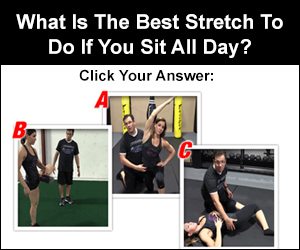Treadmills offer a convenient and effective way to improve cardiovascular health and achieve fitness goals. These versatile machines provide a controlled environment for walking, jogging, or running, regardless of weather conditions or time constraints. Using a treadmill effectively involves proper form, gradual intensity increases, and consistent effort to maximize results.

Regular treadmill workouts can boost endurance, burn calories, and strengthen leg muscles. Users can customize their sessions by adjusting speed, incline, and duration to match their fitness levels and objectives. This flexibility makes treadmills suitable for beginners and experienced athletes alike.
To get the most out of treadmill exercises, it’s essential to maintain good posture, stay hydrated, and listen to your body. Incorporating interval training and varying workouts can prevent boredom and challenge different muscle groups. With the right approach, treadmill sessions can become an integral part of a well-rounded fitness routine.
Key Takeaways
- Proper form and gradual intensity increases maximize treadmill effectiveness
- Customizable settings accommodate various fitness levels and goals
- Regular treadmill use improves cardiovascular health and endurance
Preparing for Your Treadmill Workout
Proper preparation is crucial for an effective and safe treadmill session. Taking a few key steps before starting your workout can enhance your performance and prevent injuries.
Choosing the Right Gear
Selecting appropriate footwear is essential for treadmill workouts. Running shoes with good cushioning and support help absorb impact and reduce strain on joints. Look for shoes designed specifically for running or walking, depending on your planned activity.
Comfortable, moisture-wicking clothing allows for freedom of movement and helps regulate body temperature. Avoid loose-fitting garments that could get caught in the treadmill’s moving parts.
Don’t forget to bring a water bottle to stay hydrated during your workout. Some treadmills have built-in holders, but if not, place your water within easy reach.
Understanding Treadmill Features
Familiarize yourself with the treadmill’s control panel before starting. Locate the emergency stop button and learn how to use it quickly if needed. This is a crucial safety feature.
Explore the pre-set programs available on the machine. These can offer variety and structure to your workouts, targeting different fitness goals like fat burning, endurance, or interval training.
Learn how to adjust speed and incline settings. Most treadmills allow users to make these changes gradually, helping to customize the workout intensity.
Warming Up Properly
A proper warm-up prepares the body for exercise and reduces the risk of injury. Start with a 5-10 minute walk at a comfortable pace to increase blood flow to muscles.
Incorporate dynamic stretches to improve flexibility and range of motion. Leg swings, arm circles, and gentle torso twists are effective options.
Gradually increase your speed and incline as you warm up. This progressive approach helps the body adjust to more intense exercise, improving performance and reducing discomfort.
Pay attention to your posture during the warm-up. Stand tall with shoulders relaxed and arms swinging naturally. This sets the foundation for proper form throughout your workout.
Mastering Treadmill Techniques
Proper form, interval training, and adjusting settings are key to maximizing treadmill workouts. These techniques enhance efficiency and results while reducing injury risk.
Maintaining Proper Form
Good posture is crucial for effective treadmill use. Stand tall with shoulders back and relaxed. Keep eyes forward, not down at the console. Engage the core muscles to support the spine.
Arms should swing naturally at the sides, with elbows bent at about 90 degrees. Avoid crossing arms in front of the body or gripping the handrails tightly.
Foot strike is important. Land midfoot or on the ball of the foot, not the heel. This promotes a more natural stride and reduces impact. Aim for quick, light steps rather than long, heavy ones.
Maintain a comfortable stride length. Overreaching can lead to muscle strain and poor balance. Let feet land directly under the body for optimal stability and power.
Incorporating Interval Training
Interval training boosts cardiovascular fitness and calorie burn. Alternate between periods of high intensity and recovery.
A basic interval workout might include:
- 2-minute warm-up at easy pace
- 1 minute at high intensity
- 2 minutes at moderate pace
- Repeat 5-8 times
- 2-minute cool-down
Adjust intervals based on fitness level. Beginners might start with 30 seconds high intensity, 90 seconds recovery. Advanced users can increase high-intensity periods and reduce recovery time.
Use both speed and incline to create intervals. Sprint on a flat surface or power-walk up a steep incline. Mix it up to challenge different muscle groups.
Adjusting Speed and Incline
Vary speed and incline to target different aspects of fitness. Slower speeds with higher inclines build strength and endurance. Faster speeds on flat surfaces improve speed and cardiovascular capacity.
Start with a 1-2% incline to mimic outdoor running conditions. This slight grade offsets the lack of wind resistance indoors.
Gradually increase incline to simulate hill training. A 4-6% grade provides a moderate challenge. Steeper inclines of 8-12% offer intense workouts for advanced users.
For speed work, begin with short bursts at a pace slightly faster than comfortable. Gradually extend the duration of these faster segments as fitness improves.
Maximizing Workout Effectiveness
Optimizing treadmill workouts involves strategic planning and execution. Proper structuring, muscle targeting, and intensity monitoring can significantly enhance results.
Structuring Your Workout
Start with a 5-minute warm-up at a slow pace to prepare your body. Gradually increase speed and incline over the next 5 minutes.
For the main workout, alternate between high-intensity intervals and recovery periods. For example:
- 2 minutes at 7 mph
- 1 minute at 4 mph
- Repeat 5-8 times
Cool down with 5 minutes of easy walking. This structure helps improve endurance and burn more calories.
Targeting Different Muscle Groups
Vary incline settings to engage different muscles. A flat surface primarily works calves and hamstrings. Inclines target glutes and quadriceps more intensively.
Try lateral walking to engage hip abductors and adductors. Hold the handrails and sidestep at a slow pace for 1-2 minutes on each side.
Incorporate arm movements to engage upper body muscles. Pump arms vigorously during high-intensity intervals or hold light weights while walking at a moderate pace.
Monitoring Intensity Levels
Use the treadmill’s heart rate monitor or wear a fitness tracker to gauge effort. Aim for 50-70% of maximum heart rate for moderate intensity, 70-85% for vigorous workouts.
Pay attention to perceived exertion. On a scale of 1-10, moderate intensity should feel like a 5-6, while vigorous workouts should be 7-8.
Adjust speed and incline to maintain desired intensity. As fitness improves, increase these parameters to continue challenging the body and improving performance.
Safety and Maintenance
Proper safety measures and regular maintenance are crucial for treadmill users. These practices help prevent injuries and ensure the longevity of the equipment.
Avoiding Common Injuries
Treadmill users should be aware of potential joint stress. Starting with a proper warm-up and gradually increasing speed and incline can help protect joints from strain. Wearing appropriate footwear provides necessary support and cushioning.
Maintaining good posture while running or walking is essential. Users should keep their head up, shoulders back, and avoid leaning on the handrails. This posture helps prevent back pain and improves overall workout efficiency.
Staying hydrated during workouts is vital. Dehydration can lead to fatigue and increase the risk of falls or other accidents. Keep a water bottle within reach and take regular sips throughout the exercise session.
Using Safety Measures
The safety clip is a critical feature on treadmills. Users should always attach it to their clothing before starting the machine. If a fall occurs, the clip will immediately stop the treadmill, preventing further injury.
Familiarize yourself with the emergency stop button location. This button provides quick access to halt the machine in case of any unexpected issues or discomfort during the workout.
Handrails offer stability but should not be relied upon constantly. Use them when mounting or dismounting the treadmill, or if feeling unsteady. Regular use of handrails can lead to poor form and reduced workout effectiveness.
Keep children and pets away from the treadmill during use. The moving belt can cause serious injuries if they get too close. Store the safety key separately when the machine is not in use to prevent unauthorized operation.
Cooling Down and Recovery

Proper cooldown and recovery practices are essential for maximizing the benefits of treadmill workouts. These steps help regulate blood flow, prevent muscle soreness, and promote overall well-being.
Post-Workout Stretching
After completing a treadmill session, stretching helps improve flexibility and reduce muscle tension. Focus on the major muscle groups used during the workout, including calves, quadriceps, hamstrings, and hip flexors.
Hold each stretch for 15-30 seconds without bouncing. This allows muscles to relax and lengthen effectively.
Dynamic stretches like leg swings and walking lunges can also be beneficial. These movements help maintain blood flow while gently stretching the muscles.
Remember to breathe deeply and evenly throughout the stretching routine. This promotes relaxation and enhances the stretching process.
Hydration and Nutrition
Proper hydration is crucial for recovery after a treadmill workout. Drink water before, during, and after exercise to replace fluids lost through sweat.
For longer or more intense sessions, consider electrolyte-rich beverages to replenish lost minerals.
Consuming a balanced post-workout meal or snack within 30-60 minutes helps replenish energy stores and supports muscle recovery.
Opt for a combination of carbohydrates and protein. Examples include Greek yogurt with fruit, a turkey sandwich, or a protein shake with banana.
Avoid sugary drinks or heavy meals immediately after exercise, as these can cause discomfort and hinder the recovery process.

